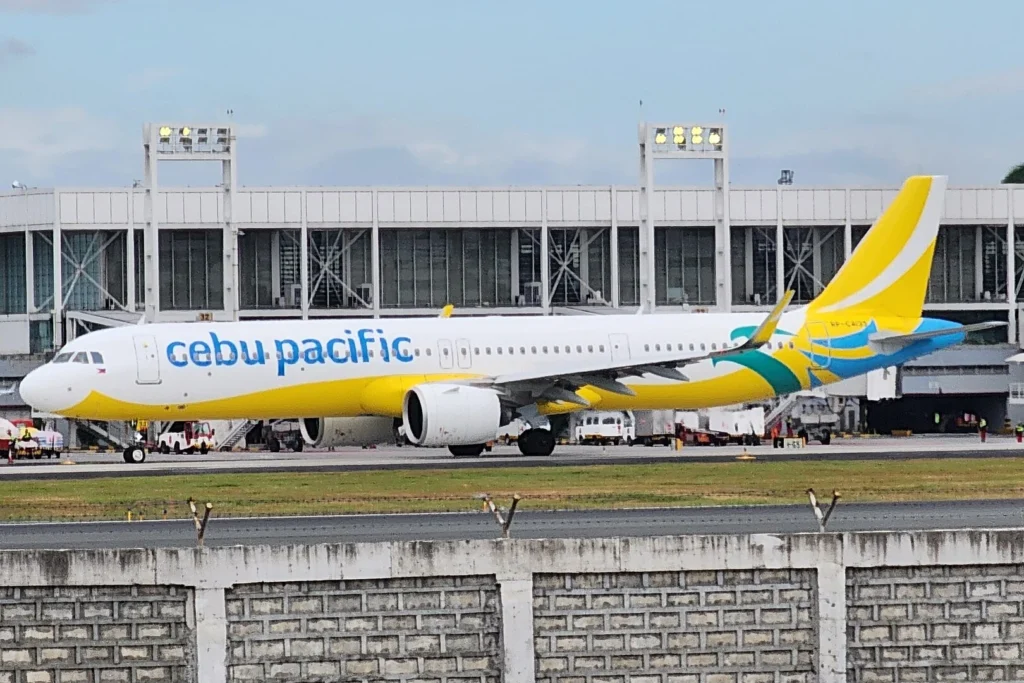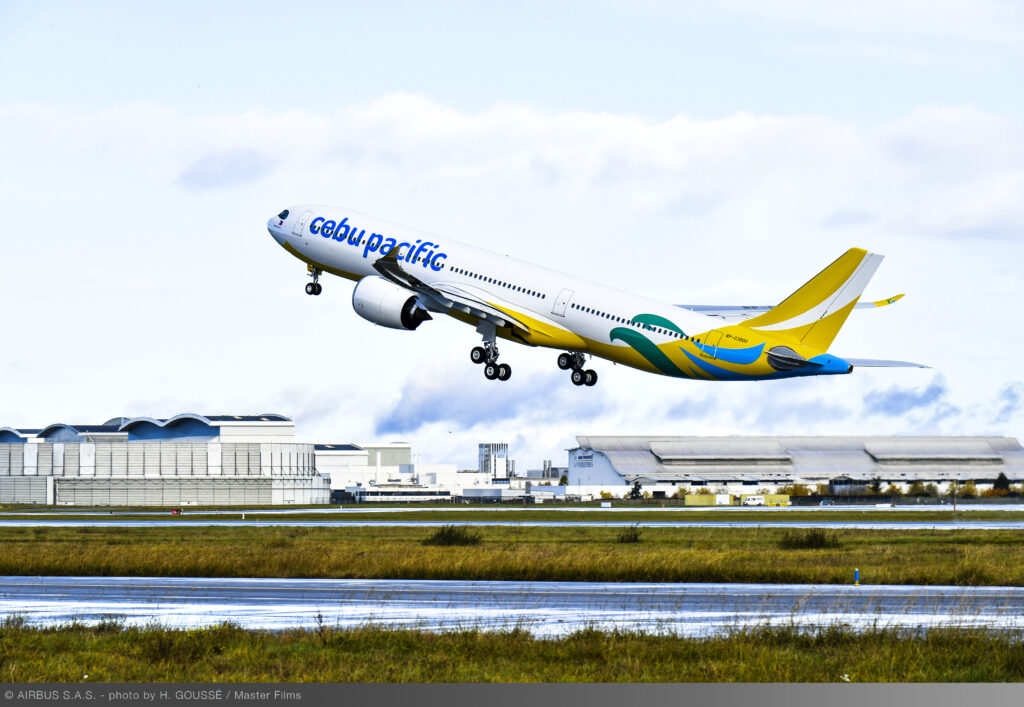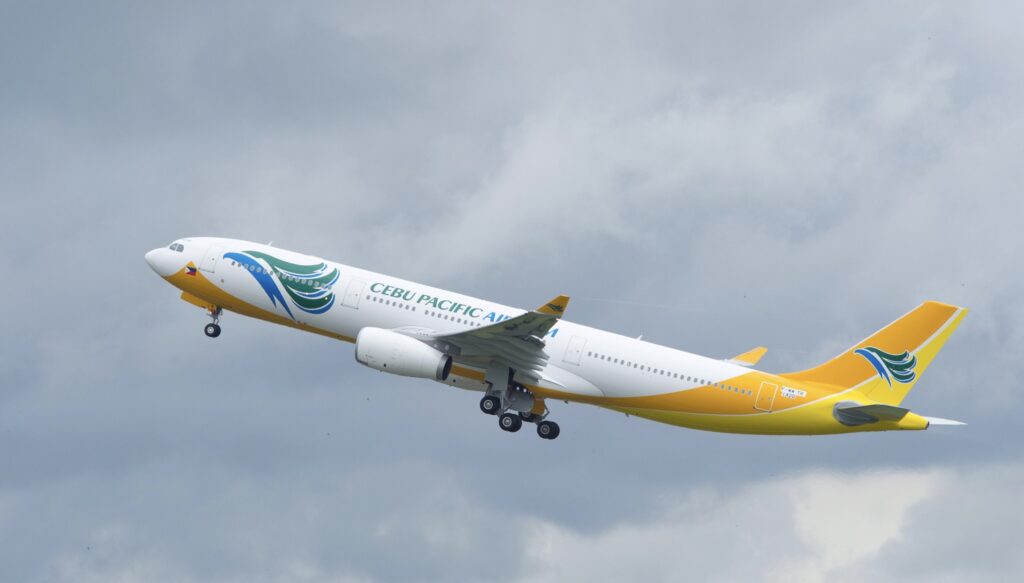
There are relatively few airlines that have ever attempted to achieve the daunting task of succeeding as a long-haul low-cost carrier. Even fewer airlines have actually done so.
Cebu Pacific (5J), a long-haul budget carrier based out of the Philippines, is one of the best examples of how this kind of success can be achieved.
 Photo: By LMP 2001 – Own work, CC BY-SA 4.0, https://commons.wikimedia.org/w/index.php?curid=141666131
Photo: By LMP 2001 – Own work, CC BY-SA 4.0, https://commons.wikimedia.org/w/index.php?curid=141666131Unique Business Model of Cebu Pacific
Launched over 36 years ago in 1988, Cebu Pacific holds the unique distinction of being the first low-cost airline launched in Asia. Based in the Manila area, the airline offers flights to domestic and international destinations. With its largest operating base at Ninoy Aquino International Airport (MNL) in Manila, the airline operates five bases across the country.
The carrier’s business model has been routinely touted as one of the most innovative in the aviation industry. Since 2010, the airline has grown to become the largest carrier in the Philippines, flying more annual passengers than flag carrier Philippine Airlines (PR).
Today, the airline operates a fleet of 79 aircraft and flies to 62 different global destinations. Let’s take a deeper look at the Cebu Pacific business model, what makes it so unique, and why the airline has been so successful.
The airline launched as a traditional short-haul low-cost carrier
When Cebu Pacific first took to the skies on March 8th, 1996, it aimed to emulate the success of other low-cost carriers in Asia. The airline launched domestic flights in the Philippines that year. The nation recently deregulated its commercial aviation industry, giving airlines like Cebu the opportunity to build business models based on lower fares.
The airline’s early growth was stunted following a deadly crash in 1998. However, the carrier continued growing its narrowbody network, flying to 18 domestic destinations in 2001. That year, the airline received approval to launch international flights. It launched new services to Hong Kong International Airport (HKG), Singapore Changi International Airport (SIN), and Seoul Incheon International Airport (ICN).
In 2005, the airline introduced its signature “Go” fare discount program, which lowered ticket prices further. This move established the airline as the go-to carrier for affordable flights in the Philippines. In a nation where cheap ferries were still more popular in many places than aircraft, this program helped attract a major sector of the market.
The airline launched more international flights in 2006. These included services from Mactan-Cebu International Airport (CEB) in 2006. The airline would later expand its offerings further with flights to Bangkok and Vietnam two years later.
- Cebu Pacific Buys 152 New Airbus A321neo for $24 Billion
- Cathay Pacific Airways plans the world’s longest commercial flight, avoiding Russia
Over the next few years, the airline’s growth continued in this way. The airline operated a fleet of narrowbody aircraft and succeeded by flying routes that were not yet served nonstop. The airline was ranked as the fastest-growing worldwide in 2008.
In 2010, the company went public in order to raise more capital for further expansion initiatives. During its first decade and a half in the skies, Cebu Pacific was able to definitively establish itself as a leading low-cost carrier in Asia.
 Photo: Airbus
Photo: AirbusCebu Pacific launched long-haul flights in 2013
On October 7th, 2013, Cebu Pacific launched its first long-haul flights to Dubai International Airport (DXB), according to Routes Online. The airline did this with a pair of Airbus A330-300 jets it acquired for the purpose.
In 2014 and 2015, the carrier launched more long-haul routes, including flights to Kuwait City, Doha, Dammam, and Riyadh. Within the next two years, the airline had also launched nonstop flights to Sydney and Melbourne in Australia.
Around this time, the airline also rebranded, revealing a new logo that shares the same colors as the Philippine flag. More long-haul flights were launched during this time, including services to Antonio B. Won Pat International Airport (GUM) in Guam. However, this route and many others were canceled in the years leading up to the COVID-19 pandemic.
Despite being slow to recover from the COVID-induced travel industry slowdown, Cebu Pacific continued to grow between 2020 and 2024. The airline achieved pre-pandemic capacity numbers in December 2022, long before many of its competitors. In 2023, the airline launched a new hub at Pampanga and resumed its flights to China.
The airline’s long-haul network was longer than ever. Airbus also delivered new, fuel-efficient Airbus A330-900neo jets to the airline. Over the past two years, the airline has continued to add new routes to its map. It has also continued to grow its fleet. Last June, the airline placed orders for up to 152 A321neo aircraft. The airline has added a new destination in early 2025. According to AeroTime, flights to New Chitose Airport (CTS) took off on January 16th for the first time.
 Photo: Airbus
Photo: AirbusSo what makes Cebu Pacific’s model so unique?
Cebu Pacific is unique because it has succeeded where others have failed. Countless airlines were not able to successfully launch long-haul low-cost flights. By contrast, Cebu Pacific has found sustained profitability in doing so. Therefore, the question remains: how was Cebu able to succeed?
The secret to Cebu Pacific’s success lies in its route strategy. The airline has effectively found ways to connect destinations that are not served by nonstop flights. It has also been able to do so in a very cost-effective fashion
The airline’s route strategists are able to find new city pairs that passengers want to fly between, but that face limited competition. It is no secret that route strategy is behind Cebu Pacific’s impressive long-term success. The airline recently won Best Airline at the Routes Asia Awards in 2024.
Cebu Pacific also believes in the doctrine of demand stimulation, something not typically used by legacy airlines. Most legacy carriers will not operate services between two destinations where enough demand does not currently exist to justify a nonstop service. Cebu Pacific, however, will launch flights between such destinations. They believe that the presence of low-cost flights alone will encourage some people to travel between two destinations who otherwise would not. When these kinds of routes are successful, the carrier can be sure to capture a sizable market share.
Cebu Pacific also thrives when it comes to cost-cutting. With nearly 460 seats onboard their Airbus A330-900neo jets, they have been able to drastically lower per-unit operating costs. This aircraft is also optimized for switching between long and short-haul routes, meaning that less maintenance is needed when the plane has to handle the stresses of continued short-haul operations.
Stay tuned with us. Further, follow us on social media for the latest updates.
Join us on Telegram Group for the Latest Aviation Updates. Subsequently, follow us on Google News
Cebu Pacific Buys 152 New Airbus A321neo for $24 Billion
The post The Cebu Pacific Business Model: What Makes It So Unique? appeared first on Aviation A2Z.


















